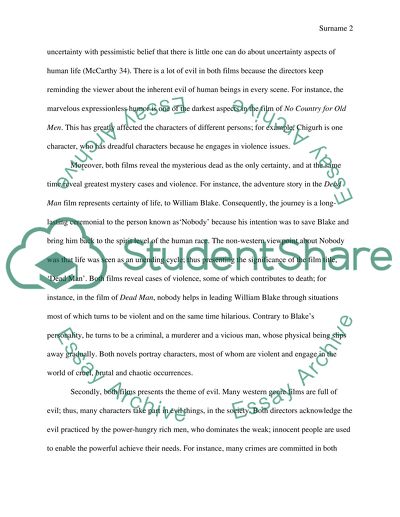Cite this document
(“The similarity and differences of No Country for Old Men and Dead Man Research Paper”, n.d.)
Retrieved from https://studentshare.org/visual-arts-film-studies/1403968-the-similarity-and-differences-of-no-country-for
Retrieved from https://studentshare.org/visual-arts-film-studies/1403968-the-similarity-and-differences-of-no-country-for
(The Similarity and Differences of No Country for Old Men and Dead Man Research Paper)
https://studentshare.org/visual-arts-film-studies/1403968-the-similarity-and-differences-of-no-country-for.
https://studentshare.org/visual-arts-film-studies/1403968-the-similarity-and-differences-of-no-country-for.
“The Similarity and Differences of No Country for Old Men and Dead Man Research Paper”, n.d. https://studentshare.org/visual-arts-film-studies/1403968-the-similarity-and-differences-of-no-country-for.


